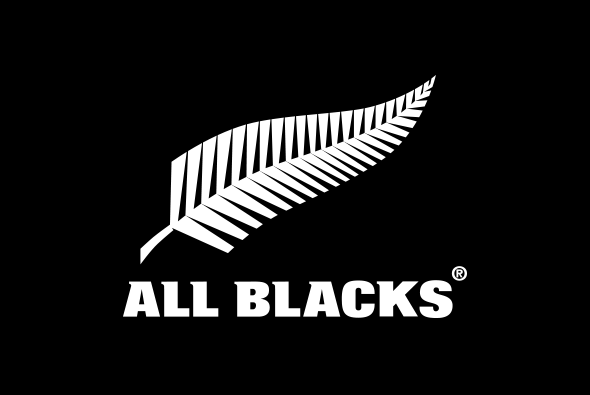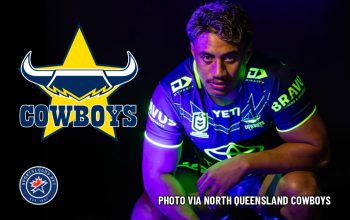I recently returned from New Zealand, a nation known for its sweeping landscapes, its creative methods of killing invasive rats, and, of course, its imposing and wildly successful rugby team.
 New Zealand is a place where the question of visual identity and national branding has been on the forefront of the mind of late. A recent referendum on whether the country should adopt a new flag just ended last month. The years-long process culminated with a design featuring a silver fern (we’ll see more of that later in this post) losing out to the current flag, which is basically Australia’s flag with the stars arranged differently.
New Zealand is a place where the question of visual identity and national branding has been on the forefront of the mind of late. A recent referendum on whether the country should adopt a new flag just ended last month. The years-long process culminated with a design featuring a silver fern (we’ll see more of that later in this post) losing out to the current flag, which is basically Australia’s flag with the stars arranged differently.
While the referendum didn’t do much more than reinforce the status quo, it did generate this piece of art from Auckland designer James Gray, who submitted this suggested flag, a kiwi bird shooting a laser from its eyes, with this description: “The laser beam projects a powerful image of New Zealand. I believe my design is so powerful it does not need to be discussed.”
When I first arrived in New Zealand, jet lagged and sleep deprived, I had a day to myself in Wellington, a city of about 200,000 on the southern coast of New Zealand’s north island. I was surprised in my first few moments walking around the other side of the world, to cross paths with a young Kiwi gentleman wearing a Philadelphia Phillies hat. Since I was also wearing a Phillies hat, I said hello. After a brief conversation, I realized he had no idea what the P on his hat stood for or, in fact, who the Phillies were at all.
Over the rest of my time in New Zealand, I saw lots of youngish people wearing Major League Baseball caps, none of whom knew their actual significance—a guy in a Braves hat said he thought it was A for Auckland, another guy chose his Tigers hat because it’s what Eminem wears, and the clerk at a store selling the hats said most customers made their choices based on color.

While I did not expect to see MLB caps in New Zealand, I did expect to see gear featuring the logo of the All Blacks, the national team of the national sport—and I was not disappointed. I do not follow rugby in particular, but I was aware of the All Blacks because every sports fan should be. They’ve been around for a century and a quarter, they’re one of the most successful teams in the history of international sports, and their pre-game ritual is a unique spectacle.
Before each match the All Blacks perform the Haka, a dance with its origins in the indigenous Maori culture. The All Blacks’ website explains, “More than any aspect of Maori culture, this complex dance is an expression of the passion, vigour and identity of the race. Haka is not merely a past time of the Maori but was also a custom of high social importance in the welcoming and entertainment of visitors.”
I’ll admit to a certain discomfort the first time I saw this performed. My initial impression was that it smacked of westerners appropriating a sacred ritual for the purpose of entertainment. However—and this is based purely on my own personal observations during a short time in New Zealand—I have never been to a place where the western culture is more thoroughly and respectfully integrated with the indigenous culture, and I believe now that the Haka is a manifestation of that.
I asked Maori New Zealander Joe Harawira, who serves as principal cultural advisor for New Zealand’s Department of Conservation, about the All Blacks performing the Haka. He told me that it was definitely a misappropriation at first, but the New Zealand Rugby Union sat with the tribe to ask for permission to perform this particular Haka. Now Maori individuals work with the team regarding the meaning and history of the Haka.
“There is tremendous buy in from the All Blacks management and players,” Harawira said, “because the Haka and Maori culture has come to be seen as a huge part of New Zealand culture.”
 The All Blacks’ logo features a leaf from a silver fern, a tree endemic to New Zealand. To say the least, silver ferns are emblematic of the country, appearing in various forms on the official coat of arms and on one-dollar coins, along with the iconic kiwi bird.
The All Blacks’ logo features a leaf from a silver fern, a tree endemic to New Zealand. To say the least, silver ferns are emblematic of the country, appearing in various forms on the official coat of arms and on one-dollar coins, along with the iconic kiwi bird.
The silver fern also appears in the identities of many of New Zealand’s sports teams, including the national soccer (“football”) team, notably called the All Whites.

The facts around origins of the team name are fluid at best. The most popular—and incorrect—theory is that the name was ascribed to the team by journalists during a 1905 tour of the British Isles, France, and North America, during which the All Blacks went 34-1. The name is attributed in various sources to newspapers using the term “all-blacks,” posters in the British town of Taunton that invited fans to “see the wonderful All Blacks play,” and one particularly apocryphal story of Welsh Daily Mail reporter John Buttery’s reference to a team so big that it looked like it was composed of “all backs,” which a printing error caused to be reported as “all blacks.” (This myth is so pervasive you can find it referenced as fact in numerous articles with a simple Google search.)
An enlightening article on the New Zealand Sports Hall of Fame website sets the record straight: “The truth is the nickname left New Zealand in 1905 with the team and all British newspapers did was to make it more popular and give it a wider use.”

While the All Blacks name was indeed ascribed by journalists and the popular media, as was the custom at the time, it goes back as far as the 1890s. One of the first documented references to the name was in July of 1893, when, according to the New Zealand Sports Hall of Fame, the Auckland-based New Zealand Observer and Free Lance predicted before a match, “I expect to see the all blacks come out on top with a substantial majority.”
However far back its origins are, the name obviously comes from the colors that the team wears on the field. These colors were determined by one of the first resolutions of the brand-new New Zealand Rugby Union, which in 1893 declared “that the New Zealand Representative colours should be Black Jersey with Silver Fernleaf, Black Cap with Silver Monogram, White Knickerbockers and Black Stockings.” (Prior to that, the team had worn not only black uniforms, but also blue and gold, and went by names like Maorilanders and Colonials.)
The All Blacks play half a world away in a nation whose entire population is less than that of the greater Toronto area, but their success on the pitch in international play along with an elegant and entrenched identity make them one of the more recognizable brands in the world. More importantly, in a sport known for being brutally violent, the All Blacks have made a logo based on a delicate plant one of the most feared in all of rugby. The only thing that would make it scarier is a well-placed laser.








